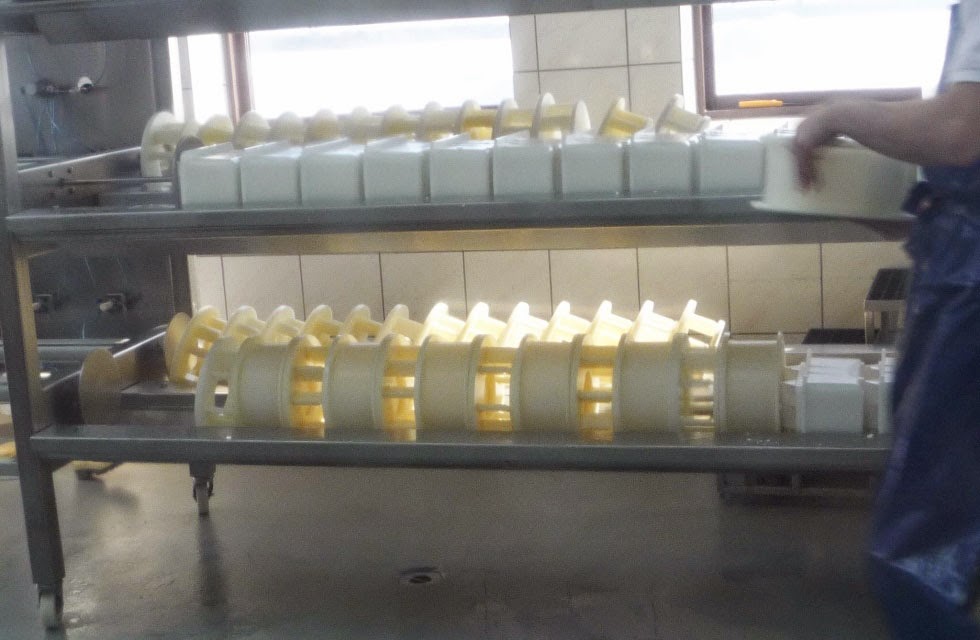Crottin de Chavignol (also
known as simply Chavignol) is a very popular soft-ripened, raw goat-milk cheese
produced in France's Loire Valley. Crottin de Chavignol received its name from
the French commune Chavignol, where the cheese was first produced in the 16th
century. Crottin de Chavignol received its AOC (Appellation d'Origine Controlée)
designation in 1976.
Crottin de Chavignol is a very small goat-milk cheese that can be
enjoyed at various stages of maturity. When it is young, 2-4 weeks old, it
measures about 2.5 cm (1 inch) in height and 5 cm (2 inches) in diameter and
weights 115 grams (4 oz). At this young stage of life, it has an ivory-coloured
rind with a distinctive crinkly surface due to natural yeast and geotrichum
bacteria. The white cream coloured, uncooked, unpressed paste is compact yet
soft, with a lovely creamy, nutty taste.
Crottin de Chavignol is an ideal cheese as it can be enjoyed
during its various stages of maturity; from a couple of weeks to 4 or more months
producing a range of very different flavors. As the cheese ripens, the paste
becomes crumbly, then turns dryer and more brittle and as the rind becomes
dryer and rougher it also changes in colour from golden to a bluish gray
colour, it also shrinks down in size to 40 grams (1.5 oz). As Chavignol
matures, it turns into a much richer cheese, with a more pronounced flavour
that is more robust, but never sours.
Crottin de Chavignol cheese is produced with the raw milk of the Alpine goat.
Crottin de Chavignol is a nice addition to any cheese platter but
it is perfect when warmed or grilled and served over a salad. Crottin de
Chavignol pairs beautifully with a white wine from the Vallée de la Loire such
as a Sancerre or a sparkling Chenin Blanc or a Pouilly Fumé.
Alpine Goat Photo Source: www.wikipedia.org

























